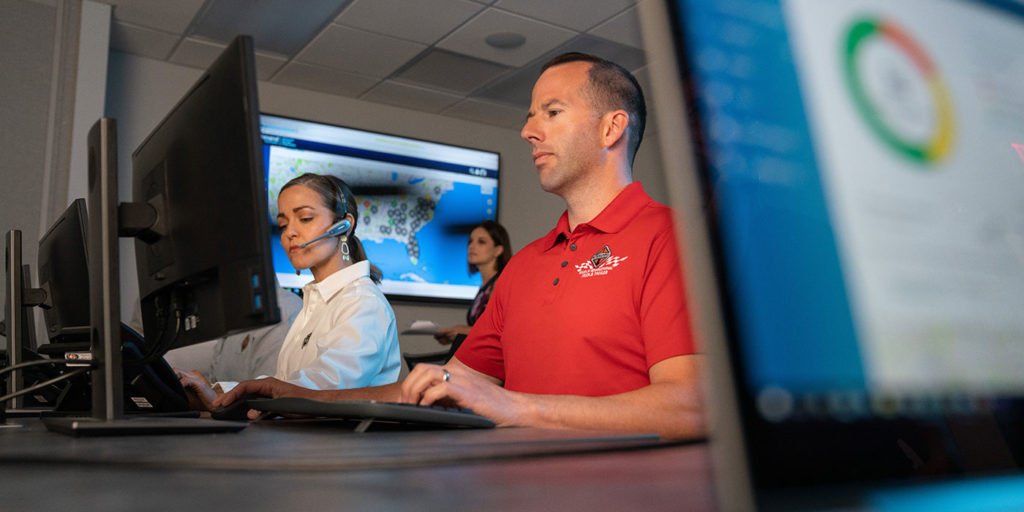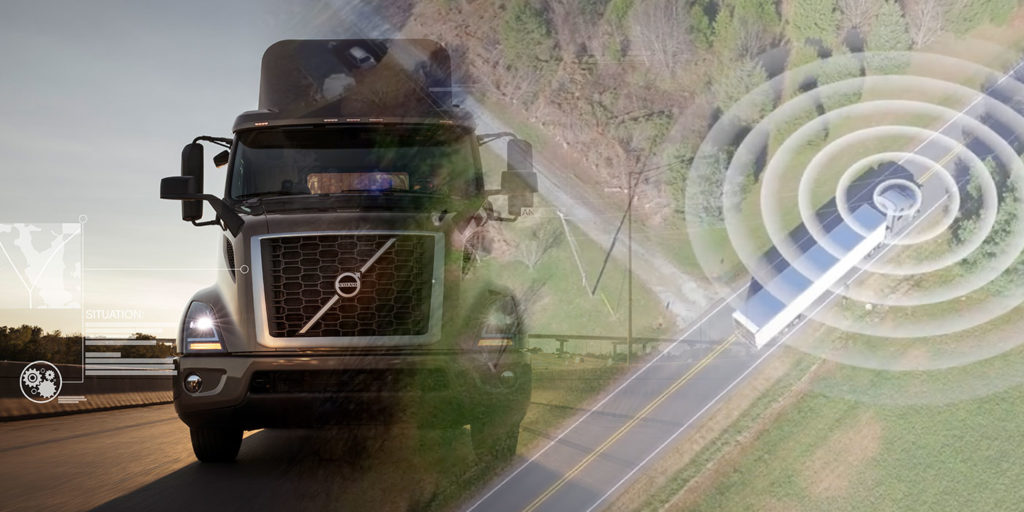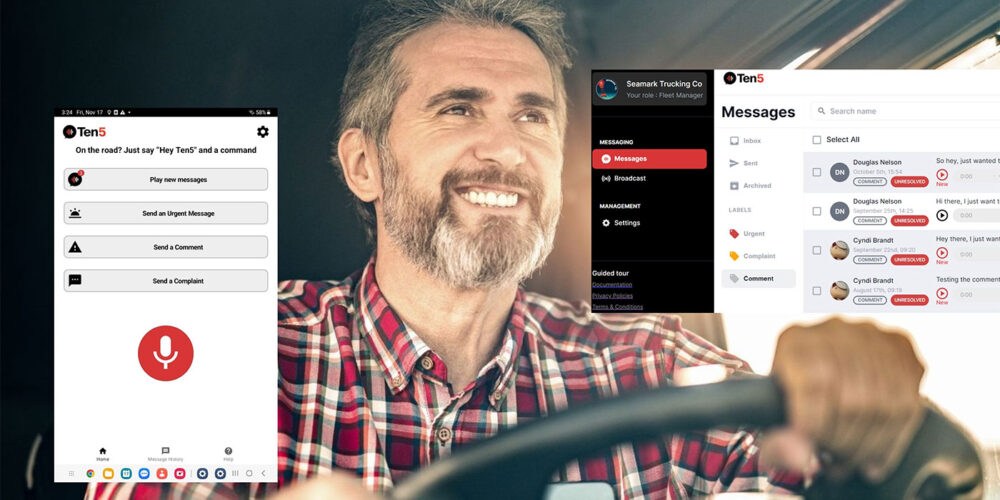What’s the deal with over-the-air engine reprogramming?
That’s no Seinfeld bit – it’s what OEMs are starting to hear from customers every day. Most manufacturers who offer it say OTA reprogramming had already been steadily gaining traction pre-pandemic among fleets looking for a boost in engine effectiveness and reliability. Today, the contactless nature of this service makes it the perfect way to keep trucks running at peak performance at a time when many fleets are pushing their vehicles harder than ever before.
“We’ve [Detroit] seen higher utilization of remote updates over the past months because fleet adoption of technology to minimize person-to-person interaction has increased the ease of access to viewing and updating their vehicles remotely,” says Lauren Murphree, product strategy manager for connectivity at Daimler Trucks North America.
Volvo Trucks North America has seen the same.
“We [Volvo] expanded our Remote Programming service into Mexico during the pandemic, and it has helped tremendously with no-contact customer service while stay-at-home orders and social distancing mandates have been in place here in North America,” says Ashley Murickan, product marketing manager for Volvo Trucks North America. “The ‘remote’ in Remote Programming gives customers a way to keep their vehicles optimized without requiring extra contact with others.”
For those fleets whose trucks have been parked due to COVID, manufacturers use OTA reprogramming to have their backs, too.
“We [Cummins] have also seen where the pandemic has impacted our customers, as some fleets’ equipment was shut down due to changes in their operations. We continue to work with our partners through this difficult time and look forward to expanding our reach and providing more customers with access to our digital solutions.” says Dan Fedewa, director digital accelerator – product leader at Cummins. “For those units still in operation that have Cummins Connected Software update, it could increase their uptime by keeping their trucks where they need it, which is on the road and out of the shop.”
So, if you haven’t tried OTA reprogramming yet, maybe the pandemic has you wondering if it might be your key to increased productivity and efficiency, as well as keeping your trucks out of the service bays. That’s what we’re here to find out.
Be the master of your domain
While the OTA updating process varies from manufacturer to manufacturer, you’ll find most are designed to work with your fleet to improve engine reliability, performance and even fuel economy.
“When a calibration is released, there is always some form of a monetary benefit to the customer which ultimately provides them a lower total cost of ownership,” says Brian Mulshine, director of customer experience for Navistar. “With most modern diesel engines now being electronically controlled, many of the potential failures can be avoided by correcting issues with a software update. OTA updates will help avoid issues altogether before the engine can even detect an issue is present or a problem may occur.”
Fleets should be used to manufacturers providing software updates to their customers by now, but in the old days applying them was more of an ordeal. OTA updates have changed that, making the process nearly as convenient as updating “Clash of Clans” on your phone.
“In the world prior to over-the-air updates, you’d have to go to a dealership, you’d have to wait for your average dwell time to happen, and then you’d get your software update,” says Jason Skoog, general manager at Peterbilt. The company launched its OTA update program last December. “If we’re going to roll out a software update that’s going to somehow reduce dash lights or add a little bit of a bump to fuel economy, we want our customers to be able to get that done as soon as possible. It only takes about 20 minutes to do, and you take that 20 minutes, you do the update, and down the road you go.”
A fast, convenient way to improve your trucks isn’t the only benefit. Skoog explains how the benefits of this service trickle down to many other aspects of fleet management as well.
“I think that over-the-air updates contribute to that incremental decrease that we continue to see at dwell time,” Skoog says. “We’re keeping trucks out of a shop, and that shop bay can be used for something that’s harder to complete, or more difficult to do, or takes more hours.”
OTA reprogramming also tends to be relatively simple for drivers to wrap their heads around, he adds, especially for those who have any experience using a smartphone.
“Everybody’s got different levels of technology comfort, and so those that have a high level of comfort don’t really need to be walked through any sort of training. You can go onto the PACCAR Solutions website and you can figure it out,” he says. “You go to download the app on the phone, communicate with the driver, tell them it’s available, then the driver has to execute it while the truck stopped, etc.”
Kenworth also introduced engine and aftertreatment software updates for its Class 8 trucks equipped with 2017 or later model year PACCAR MX-13 and PACCAR MX-11 engines last December, fully rolling out its program in early 2020.
“Kenworth TruckTech+ Over-the-Air is an important technology tool that provides the latest engine calibrations and updates to our customers, helping to increase uptime and promote enhanced fuel efficiency and performance,” said Laura Bloch, Kenworth assistant general manager for sales and marketing.
One thing to note, though, is that not all manufacturers treat OTA reprogramming updates the same way, so be sure to check with your OEM on what options are available to your fleet.
DTNA’s Murphree says some OTA products require the vehicle to be connected to a WiFi hotspot to make the update. But, Detroit Connect’s remote updates allow the fleet to update the vehicle whenever they see fit.
“The customer is in charge when it comes to remote updates. With parameters and DDEC (Detroit Diesel Electronic Control) over-the-air, the customer can decide which vehicles they want to update and when – completely at their discretion,” she says. “With a firmware over-the-air update, customers are notified when an update is available, and they have the option to decide when to push the update to the vehicle. For fleets, the benefit is the flexibility to decide what timing is best for an update in their operations.”

Did you ever notice…
Have you ever been between PMs and something happens to your engine, causing your fleet additional downtime? That’s less likely to happen with some OTA engine programming, which is capable of monitoring engine function and noticing when something isn’t quite right.
“Engine function is continuously monitored for potential problems by Volvo Trucks’ Remote Diagnostics service,” says Volvo’s Murickan. “If a problem is identified and can be resolved by a software update, it can be done using over-the-air programming wherever it is convenient for the customer. This avoids taking the truck to a shop for updates to be done and can save the customer an average of 2.3 days of downtime. Our Remote Programming updates only take around 10-15 minutes to complete.”
Cummins’s Fedewa says software updates can also be a preventative measure in protecting equipment, therefore improving uptime.
“Cummins Connected Software Update is always monitoring the engine’s current calibration and looks for any new updates that are available. Cummins recommends that customers always keep their calibrations up to date to ensure the best reliability and performance they can get while improving uptime,” he says.
These updates are making me thirsty (for even more updates)!
OEMs are constantly tinkering with what is possible to provide with OTA engine reprogramming. And the technology is only getting better as it evolves.
Volvo imagines a future where software and parameter updates are much faster with fewer interruptions to the driver. Volvo’s Murickan says parameter updates will become more dynamic, and enable the truck to adapt automatically to local conditions.
“For example, the speed limit changes to 65 MPH at the Louisiana border; the truck automatically adjusts the road speed max parameter to the new limit,” he says. “Or, the truck enters a downtown/metropolitan area and therefore applies a three-minute idle shutdown parameter kit to comply with idling laws.”
Fedewa says enhancements to Cummins’ OTA programming is focused on giving fleets control of their engines on a much more granular level.
“New capabilities such as ECM trim parameter updates will allow fleet managers to better configure their equipment based on changes in their operational needs,” he says. “Additional areas of focus will likely be improving software updates so downtime is not required and making changes dynamically while the truck is in operation.”
Navistar’s Mulshine says it’s his company’s goal to have factory-installed telematics devices power customers’ existing telematics systems.
“Nobody wants another portal and another login, and I think it’s on us as OEMs to work closely with third parties to provide the best single customer solution we can,” he says.













